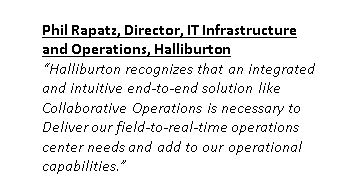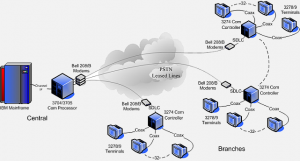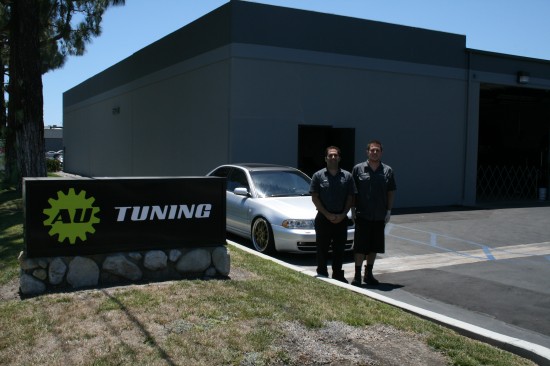Cyber security risk management and compliance for industrial control environments – especially in the Oil and Gas Industry, and the ability to connect experts for mission critical communications and collaboration are key areas that Cisco is addressing with two new services-lead solutions.
We’re living in changing times. Cyber attacks are on the increase and critical infrastructures are under threat. Just finding oil and extracting it economically is becoming increasingly difficult. These two factors are top-of-mind for the oil and gas executives I talk to. Whether it’s an Integrated Oil Company (IOC) like Royal Dutch Shell, or an Oil Services company like Halliburton, many companies are under pressure to secure their infrastructure to protect against cyber, geo-political or operational threats and reduce risks associated operational challenges.
You’ll remember from my recent post: High Energy at Cisco Live in San Francisco, where Alan Matula, EVP and CIO of Shell talked to John Chambers at Cisco Live about how Shell and Cisco were partnering to secure critical infrastructure. Alan talked about how the changes in the oil and Gas industry – in particular the new non-traditional methods (hydraulic fracturing, or “fracking” and horizontal drilling) mean that hundreds, even thousands, of drill sites may be needed, rather than the more modest half dozen or so that were required in the past.
As the processes required become more complex, and the Internet of Everything enables improves workflows that were not possible in the past, organizations need more visibility into their business and need to have tools that will positively impact the bottom line by protecting against risks, improving efficiency and lowering site downtime.
That’s were the Cisco Secure Ops and Cisco Collaborative Operations solutions come in.
First off, let’s look at Secure Ops:
 It actually provides “Critical infrastructure security as-a-service” and uses a convenient service wrapper and attaches a set of service level agreements. What it does is support cyber security risk management and compliance for industrial control environments. It addresses risks using a combination of people, process and technology before, during and after a risk or security event takes place. It’s made up of tightly integrated Cisco and third party products and services.
It actually provides “Critical infrastructure security as-a-service” and uses a convenient service wrapper and attaches a set of service level agreements. What it does is support cyber security risk management and compliance for industrial control environments. It addresses risks using a combination of people, process and technology before, during and after a risk or security event takes place. It’s made up of tightly integrated Cisco and third party products and services.
- It is designed to be “dropped in” to brownfield or greenfield environments and delivers unparalleled capabilities and security control mechanisms.
- The integration extends into commercial arrangements with automation suppliers for services like qualified patch lists and anti-virus updates.
The business benefits are:
-
Business leaders gain situational awareness for security maturity and compliance within various parts of the business.
-
Site leadership and management benefit from reduced management complexity and increased consistency across individual sites, leading to optimized operational costs.
-
Site technical leaders are provided with a technical solution to help manage security and compliance on a per-site basis as well as valuable tools to increase it through standardized interfaces and capabilities
-
Corporate risk and compliance leaders receive near real time information on operational risks associated with cyber-security threats and adherence to compliance policies.
Here’s more about the Cisco Collaborative Operations Solution:
 It’s actually a collaborative portal that combines voice, video and data collaboration in a single, secure view. It’s an ‘always-on’ style of collaboration that can bring in multiple technologies like Cisco Video Surveillance Manager; Cisco IPICS; landline; mobile; two-way radios and remote speaker integration; chat functionality; WebEx and multiple application sharing. All on a single pane of glass (well, in an ops room that could be a huge wall screen!).
It’s actually a collaborative portal that combines voice, video and data collaboration in a single, secure view. It’s an ‘always-on’ style of collaboration that can bring in multiple technologies like Cisco Video Surveillance Manager; Cisco IPICS; landline; mobile; two-way radios and remote speaker integration; chat functionality; WebEx and multiple application sharing. All on a single pane of glass (well, in an ops room that could be a huge wall screen!).
What it’s designed for is operations personnel working in distributed networks and lets remote experts help guide operations in real-time, afford greater reach per expert resource and minimize miscommunication driving faster, better decision making. It can combine multiple feeds, and individuals and feeds can ‘come and go’ as required during a collaboration period. In the case of an Oil Services Company, that could be weeks or months!
The business benefits for this solution are:
-
Platform enables communication between stakeholders at all times.
-
Remote Experts can be instantly connected with on-site personnel using voice, video or data.
-
Solution creates opportunities for workforce development and training, safety improvements, and risk mitigation
Whilst related solutions, many customers may start implementing one before the other depending on their particular circumstances. Remember this is largely a services offering, so customers have the comfort of knowing that Cisco, along with our partners, are ‘bringing this together’ for them to address key business issues.
There’s a lot more information at the cisco.com site here if you care to take the time to peruse.Also, you can read the Press Release here: Cisco Delivers Two New Industry Solutions to Protect Against Security Threats and Enhance Collaborative Decision Making.
What do you think?









CONNECT WITH US